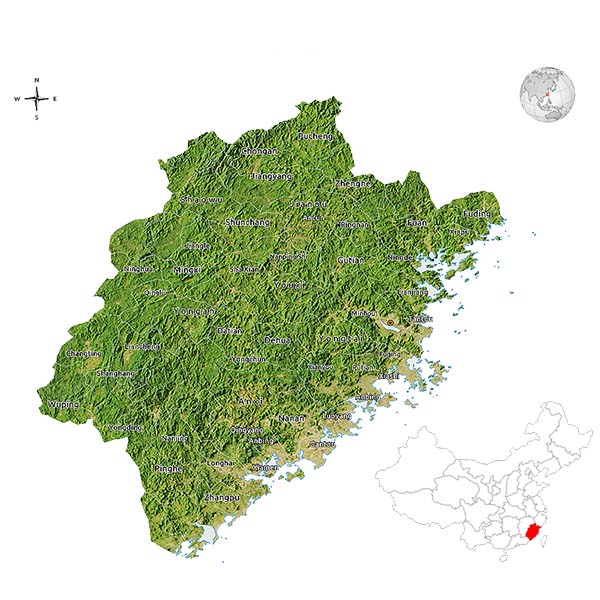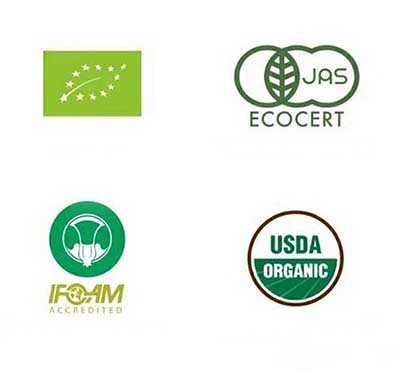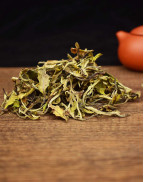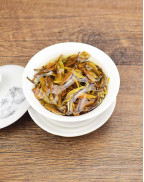Organic Floral White Peony (Bai Mu Dan) White Tea
- Product Code: simple
- Availability: In Stock
Basic Info
Name: Organic Floral White Peony (Bai Mu Dan) White Tea
Origin: Fuding City, Fujian Province
Harvest Period: March 24 2024
Taste & Aroma: Sweet aroma with hints of spring leaves,a hint of woodiness, pekoe flavour, floral & fruity undertone
Item Form: loose Leaves
Ingredients: hand-picking natural tea buds and leaves
Shelf Life: Can be preserved for a long time under suitable conditions
Caffeine: Low
Liquor: Light golden colour
Dry Leaf: Slender, down-covered buds with two tender young leaves
Storage: Store in cool, airtight, opaque containers
Flavor: Unflavored
Sourcing : Teapooo
Organic Floral White Peony (Bai Mu Dan) White Tea
This organic tea is harvested in spring and made of one bud and one or two leaves. It has not undergone through complicated processing steps except that it is naturally withered in the air for more than 70 hours.Therefore, this kind of tea retains most of the natural flavors and ingredients of the tea tree itself. As the name implies, the most striking feature of this tea is its natural floral/fruity fragrance. The outstanding fragrance of this kind of tea is the result of the joint action of special growing environment and tea variety.
Organic Floral White Peony (Bai Mu Dan) White Tea is a delicate and aromatic tea that is handcrafted from the finest tea leaves and buds. This tea is grown in the high-altitude mountains of China's Fujian province, where it is carefully nurtured by experienced tea growers.
The tea leaves and buds are handpicked and processed with great care, resulting in a tea that is bursting with floral fragrance and a hint of sweetness. As a white tea, it is lightly oxidized, giving it a smooth and subtle flavor that is enhanced by the natural sweetness of the tea leaves.
Where does the flower fragrance of Bai Mu Dan (White Peony) come from?

Fuding Daba
Show Full Description
As we all know, fresh tea leaves contain many kinds of aromatic chemical. Some of them are responsible for
emitting fragrance which is very important for the quality of tea. These aromatic substances are unstable in
nature, and a series of chemical reactions are easy to occur during tea processing. These chemical reactions are
the secrets of tea flavor.
Different processing methods and external conditions lead to different fragrances and tastes. Some teas, such
as black tea and oolong tea, require relatively complex processing techniques to produce. A series of oxidation
and polymerization reactions will take place in the process of making tea under humid and high temperature
conditions, which will lead to the reduction of some aromatic substances and the generation of new aromatic
substances.
Compared with white tea, the production processes of fully fermented black tea and semi-fermented oolong tea
are relatively complicated. This is probably the reason why there are great differences between black tea,
oolong tea and white tea in taste and aroma.

The Core Production Areas Of White Tea In China
Because white tea has undergone the least processing steps, in a sense, white tea has retained more of its
own flavor.
This kind of tea is from an organic certified tea garden in Fujian. This tea garden, like most organic tea
gardens in China, is located in a mountainous area, far away from cities and managed by professional and
technical personnel. The chemical fertilizers and pesticides are not allowed in the tea garden, so the quality
of organic tea grown here is very good.
According to the grading standard, this inferior to Bai Hao Yin Zhen tea in grade. But it does not mean this
tea is not good. On the contrary, this tea is cost-effective. When brewing, the floral fragrance and Xiang Hao
(fur fragrance) are very prominent. It has attracted a large number of tea lovers for its flavour and good
tastes.
If you are unfamiliar with white tea and want to give it a try, this organic white tea will not let you
down.
Bai Mu Dan (White Peony)
Bai Mu Dan (White Peony), also known as 'White Peony', is a type of classic white tea from China. It is mainly produced in Nanping County, Songxi County, Jianyang City, Fuding City, Ningde City in Fujian Province, China.

Its leaves are densely covered with white fine hairs. After brewing, the pale-green leaves hold the tender buds just like flowers have just bloomed, so the name is white peony.
Features and Classification:
Plump buds are sandwiched between leaves, and the back of the leaves is densely covered with white fine hairs. The leaves and buds of Bai Mu Dan (White Peony) white tea are plump and tender, showing greyish green. The aroma is fresh and lasting after brewing, and the taste is mellow and sweet. The brewed veins become slightly red. Bai Mu Dan tea can be divided into Zhenghe Dabai tea, Fuding Dabai tea and Narcissus (Shui Xian) white tea according to the raw materials it is made.
_tea_garden.jpg)
Bai Mu Dan (White Peony) tea garden
History
It does not have a long history. Bai Mu Dan (White Peony) Tea was invented in Shuiji Township, Fujian Province before 1922. Shuiji originally belonged to Jian'ou County, but it was later introduced into Zhenghe County.Since 1922, Zhenghe County began to produce Bai Mu Dan (White Peony) tea and exported it to Vietnam. Now it is mainly sold in the Chinese Mainland, Hong Kong, Macao and Southeast Asia. Traditional Chinese medicine theory believes that it has the effect of reducing internal heat, so some people think it is suitable for drinking in summer.
Classification of white tea by fresh leaves and final product characteristics
- White peony tea is a kind of white tea which is made from large-leaf variety and traditional processing technology.
- Gongmei tea is the tea produced by the traditional process using small-leaf leaves as raw materials.
- Shoumei tea is made from leaves of large-leaf or small-leaf variety without buds.
Fresh leaves
Picking standards: High-grade Bai Mu Dan (White Peony) is strict with raw materials (fresh leaves). According to different requirements of grades, Bai Mu Dan (White Peony) tea are made from tea buds and one bud with one immediate young leaf or one bud with two young leaves.
The tea variety family used to produce white peony is the "Dabai" variety. In eastern Fujian, people use Fuding Dabai. In northern Fujian, Zhenghe and Dabai varieties are used. The difference of tea varieties leads to two different types in Bai Mu Dan (White Peony): Fuding variety and Zhenghe variety.
The date of picking also has a great relationship with the quality of Bai Mu Dan (White Peony) tea. The most suitable picking date is around the Qingming Festival in spring.
_tea.jpg)
Dried leaves of Bai Mu Dan (White Peony) tea
Tea plant varieties
The tea variety family used to produce Bai Mu Dan (White Peony) is "Dabai" variety. In eastern Fujian, people use Fuding Dabai. In Northern Fujian, Zhenghe and Dabai varieties are used. The difference in the Bai Mu Dan (White Peony) tea plant leads to two different types of Bai Mu Dan (White Peony): Fuding variety and Zhenghe variety.
Picking standards
Bai Mu Dan (White Peony) tea can be picked in batches all year round, and the following standards should be followed when picking to ensure the quality and output of the tea.
Some of the common standards are as follows.
1.Don't pick tea on rainy days.
2. Tea leaves with dew on them can not be picked.
3. Purple buds are not suitable for picking.
4. Tea leaves by pests and diseases are not suitable for picking.
5. Over-mature and old leaves should not be picked.
6. Unhealthy buds and leaves can not be picked.
7. Frost-damaged tea leaves can not be picked.
Tea picking can be done in spring, summer and autumn. Most of these happen in the spring.
Common varieties that can be used to make Bai Mu Dan (White Peony) tea are Fuding Dahao, Fuding Dabai, Fu'an Dabai, Zhenghe Dabai, Shuixian and Gele. Different varieties of Bai Mu Dan (White Peony) have different features.
Processing steps
The primary processing procedure of Bai Mu Dan (White Peony) is basically the same as that of Bai Hao Yin Zhen tea: fresh leaves → withering → baking → Maocha(rough tea).
Compared to making processes of other teas, there are only two main processes for making white peony: withering and baking, but these two steps are hard to master.
_tea_withering.jpg)
Processing of Bai Mu Dan (White Peony) tea - Withering
Withering
The picked fresh tea leaves should be exposed to the sun for a period of time, and then briefly piled to promote oxidation. During this period, the enzymes in the tea interact with other components to form new chemicals, which are the internal key factors of Bai Mu Dan (White Peony) tea's taste and aroma. According to the taste, picking time and picking weather of finished products, the drying process may last for 1-3 days, and the piling step takes half an hour to 3 hours.
Baking
The drying process in Bai Mu Dan (White Peony) can last for 1 to 3 days, and then it is simply piled together, baked and dried, so as to be packaged. Tea leaves should be carefully handled carefully in the whole process to prevent the destruction of cell structure. If not handled properly, it may lead to unnecessary oxidation and quality degradation.
The key to the production process of white peony is withering. It is better to choose the appropriate weather
according to the climatic conditions, preferably the sunny weather in spring and autumn or the sunny weather in
summer. At the same time, it is better to adopt indoor natural withering or compound withering
methods.
Flavour
Bai Mu Dan (White Peony) is sometimes favored by some white tea lovers, because its taste is fuller and more mellow, and its aroma is stronger than that of Bai Hao Yin Zhen Tea, another major variety of white tea. The latter is made of young tea buds, so it is softer and more subtle. The typical taste of Bai Mu Dan (White Peony) is the result of the combined effects of processing methods and tea varieties.
Bai Mu Dan (White Peony) tea with good quality has obvious sweet and clear flavor, accompanied by pekoe, floral, grass fragrance. The taste will change significantly with the brewing times. After brewing, the Bai Mu Dan (White Peony) tea is mostly transparent amber and yellowish. Such a special good tea is worth a try.
Organic Tea Standards
Organic tea is a kind of pollution-free and pure natural tea
Organic tea uses natural green fertilizer in the planting process, and adopts biological or physical methods to prevent and control diseases and insect pests. It is based on natural farming, and it is not allowed to use any chemically synthesized pesticides and fertilizers. Chemical additives are not used in the processing of organic tea. In the whole production and processing process, organic tea keeps the most complete aroma and taste of tea, and at the same time, it minimizes the pollution to the environment. Organic tea is produced in accordance with the standards of the International Federation of Organic Agriculture Movements (IFOAM), and has passed the organic certification of the Organic (Natural) Food Certification Organization.
Some of approved certifying organisations:
|
United States |
USDA |
| European Union |
ECO-CERT, European Commission |
|
Australia |
NASAA , ACO |
| France |
ECO-CERT , COSMEBIO |
| UK |
SOIL ASSOCIATION |

You can find your favorite organic teas in Teapooo. We make a commitment that the organic teas we provide are grown and produced without any chemical synthetic pesticides and fertilizers, and without any chemical additives in the production of organic tea. Our organic teas come from trusted and reputable organic tea suppliers in China, and has undergone our strict examination. Our primary goal is to provide delicious and healthy organic teas to tea lovers around the world. The organic teas we supply have been certified by one or more certifying organisations (such as JAS, USDA, ECO-CERT, NASAA, etc) and obtained the certificates issued by them. You can find copies of these certificates on our product detail pages.
| Chinese Gongfu Method | |
| Tea | 3g |
| Water | Gaiwan 3oz / 90ml |
| Time | 4 steeps (10s,15s,30s,1m) |
| Temperature | 90°c |
| Teapot Method | |
| Tea | 5g |
| Water | Teapot (8oz / 240ml) |
| Time | 1- 4mins |
| Temperature | 90°c |























